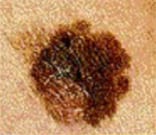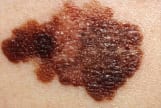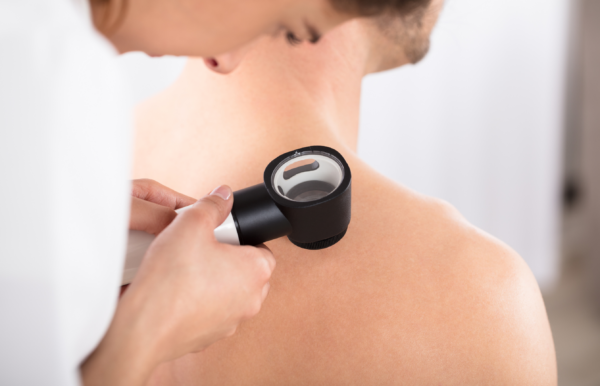What is it?
Malignant melanoma is the deadliest form of skin cancer. Over 5,000 people are diagnosed annually in Canada. Melanoma causes more than 900 deaths every year. Early diagnosis and treatment are critical. Major causes for malignant melanoma include chronic exposure to ultraviolet radiation (sunlight), tanning beds and other sources of artificial ultraviolet light.
While the full answer of what causes it still has not been unravelled, what is sure is that excessive exposure to ultraviolet radiation (ie. sunlight and tanning beds) plays a leading role in the development of this type of skin cancer. Severe, blistering sunburns, especially in childhood are thought to play an initiating role. However, recent research shows that sunburns at any time during life can also increase the risk.


Who Gets It?
Generally, malignant melanoma occurs more frequently among people who:

- are fair skinned
- have blonde or red hair
- have blue or green eyes
- are prone to freckling and sunburns
- have many moles (50+) or moles with unusual colours/shapes/large sizes
- have a history of frequent sun exposure
- have a close family history of melanoma
What to Look For?
- A new flat, freckle-like spot
- A spot that is brown or black (though some are a mix of colours, including red, blue, or white)
- Change in the shape or colour of an existing mole or coloured spot
Melanoma appears most commonly on the back and legs. However, it can appear anywhere on the skin surface or in the mouth or eyes. Though less common in darker-skinned people, melanoma usually appears on the palms of hands, soles of their feet and nail beds.
Stages of Melanoma
Early melanoma
Stage 0 – Only in the very top layer of the skin (the epidermis).
Stage I – In the surface layers of the skin and has not spread to nearby lymph nodes; is smaller than 1 mm with or without ulceration OR between 1 and 2 mm without ulceration.
Stage II – Is in the surface layers of the skin and has not spread to nearby lymph nodes; is between 1 and 2 mm with ulceration OR is larger than 2 mm with or without ulceration.
Advanced melanoma
Stage III – Has spread within the skin or to at least one nearby lymph node.
Stage IV – Has spread to other skin areas, to distant lymph nodes or to other parts of the body including internal organs such as the lungs.

